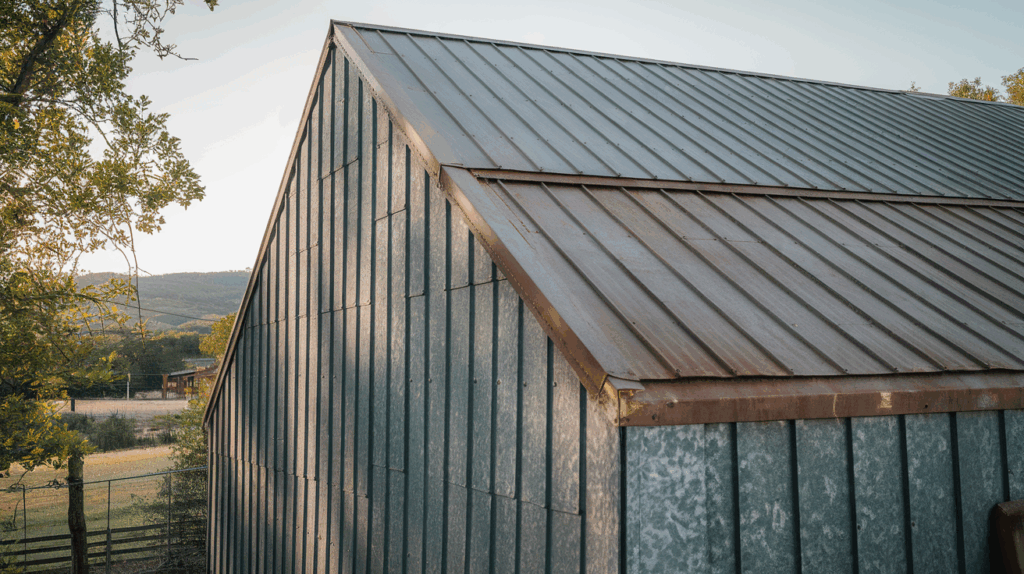When I first started thinking about siding for my house, I didn’t realize how many options were available. Metal siding stood out quickly as a durable and stylish choice.
It offers long-lasting protection against the elements and can significantly transform the appearance of a home.
However, selecting the right type can be a challenge, as each material comes with its own set of benefits, costs, and maintenance needs.
In this guide, I’ll cover the most common types of metal siding, factors to consider when making your choice, and what to keep in mind during installation.
By the end, you’ll have a clearer understanding of which option best fits your home.
Different Types of Metal Siding
Metal siding is available in various styles, each offering distinct features that can influence your decision. Let’s look at some of the most popular options.
1. Steel Siding
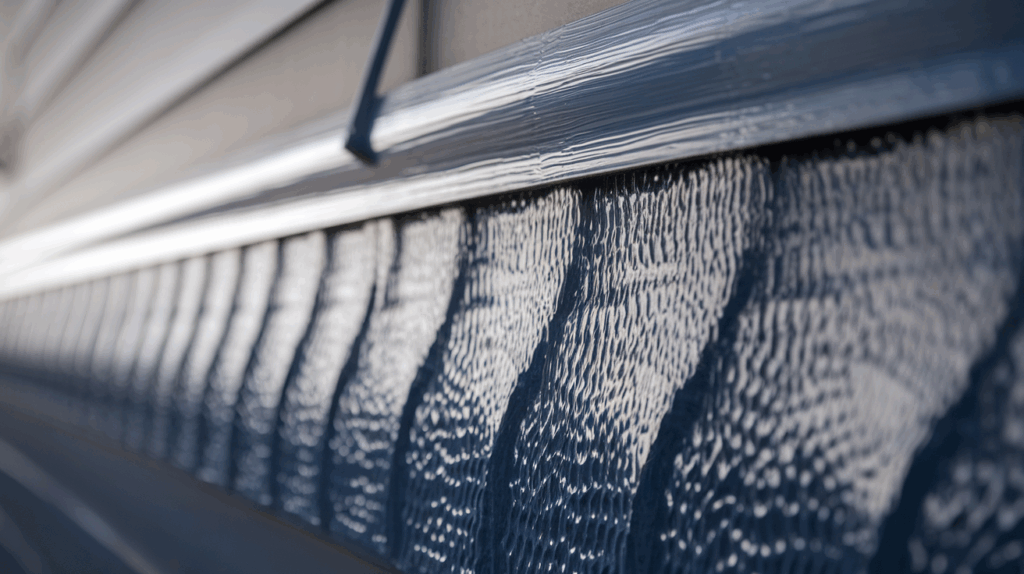
Steel is one of the most durable options available, capable of withstanding harsh weather conditions.
It’s an excellent choice for homes in areas subject to extreme temperatures or strong winds.
While steel is more expensive than some other materials, its strength provides long-term value. Additionally, steel resists warping, rotting, and damage from moisture.
2. Aluminum Siding
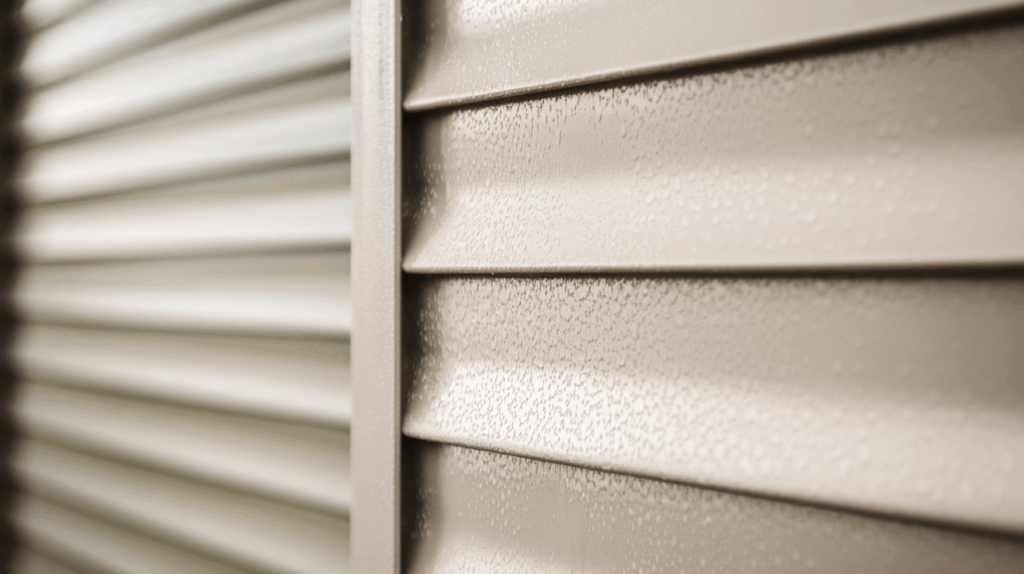
Aluminum siding is lightweight and highly resistant to rust, making it ideal for homes located near the coast or in humid regions.
It requires minimal maintenance but can dent more easily compared to other metals. Aluminum is also an eco-friendly choice since it’s highly recyclable.
3. Copper Siding
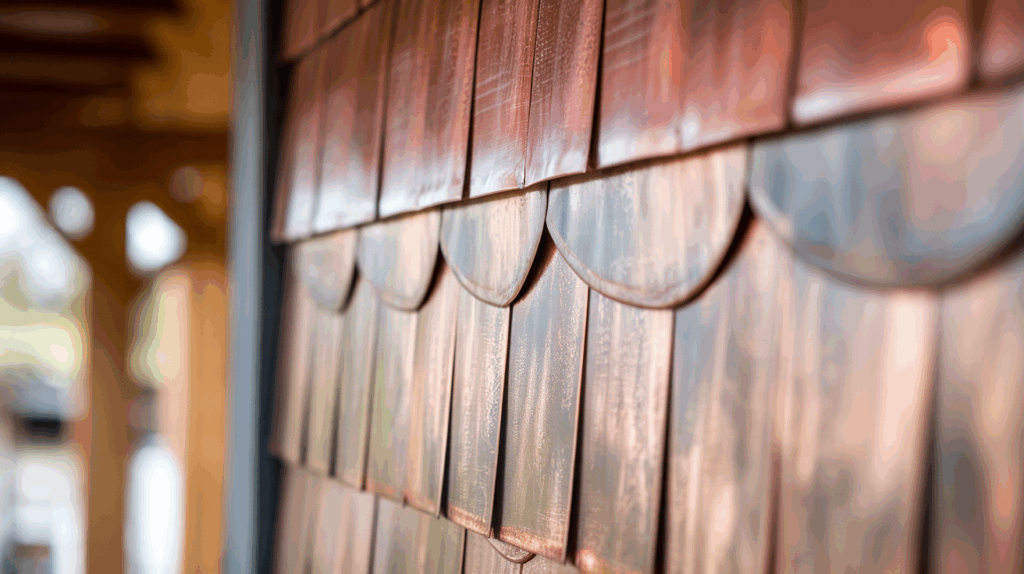
Copper siding is known for its unique aesthetic, developing a natural patina over time that adds to its charm.
It’s a durable option, resistant to corrosion, but it’s also among the more expensive choices.
Due to its cost, copper is typically used as an accent or for specific features rather than covering an entire home.
4. Zinc Siding
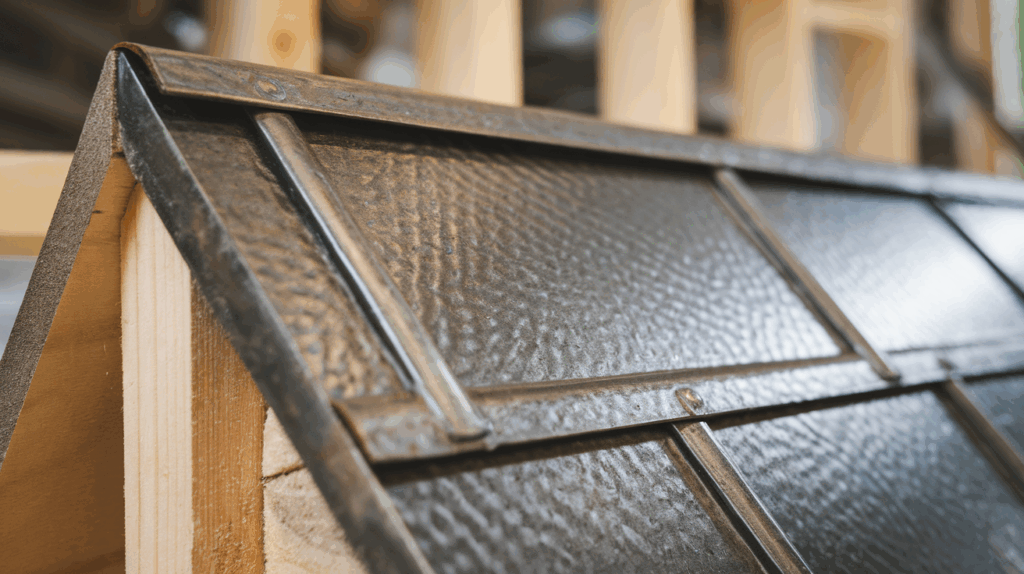
Zinc siding has gained popularity in modern architecture for its sleek and contemporary look.
It’s highly durable and develops a protective patina that helps resist the elements. This material is perfect for those seeking a minimalist, industrial-style appearance.
5. Corrugated Metal Siding
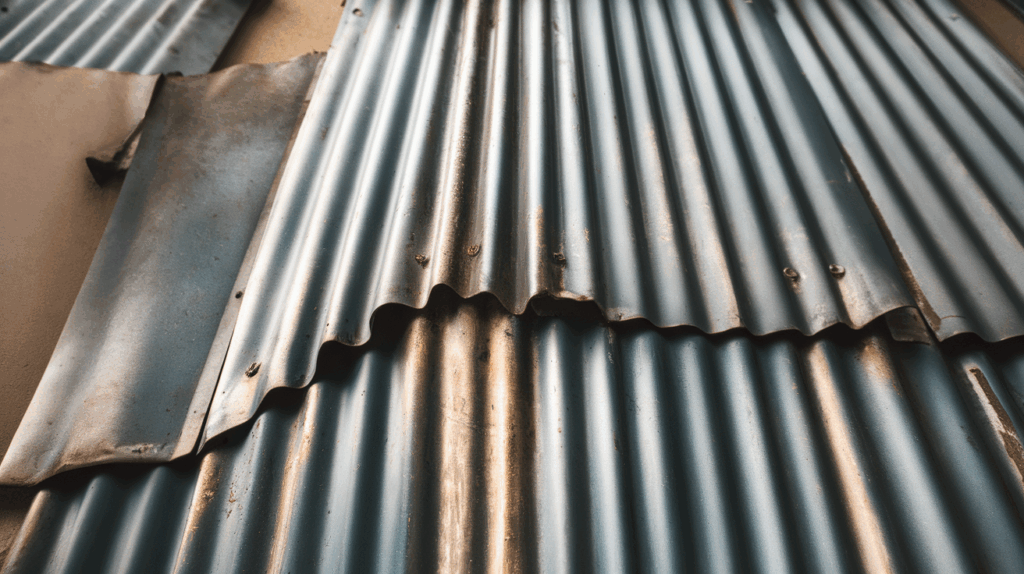
Corrugated metal siding has a rustic appeal and has long been used in agricultural buildings.
It’s a budget-friendly option that provides excellent durability and requires little maintenance.
It’s especially effective in areas with heavy rainfall, where its ability to stand up to the elements is key.
6. Standing Seam Siding
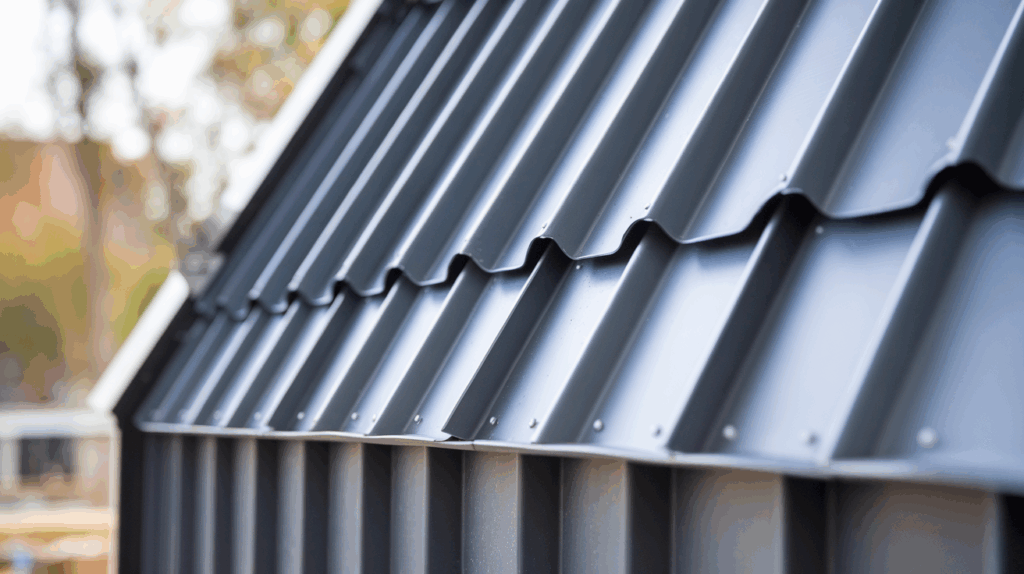
Standing seam siding is one of the most durable options available. With hidden fasteners, it reduces the risk of leaks and provides a sleek, modern look.
This style is particularly suited for homes in regions with extreme weather conditions, offering both strength and aesthetics.
Choosing the Best Metal Siding
Selecting the ideal metal siding depends on a few factors: climate, budget, and desired appearance.
| Factor | Best Options | Why |
|---|---|---|
| Coastal Regions | Aluminum, Steel | Rust resistance makes these ideal for homes near the coast. |
| Extreme Weather | Steel, Zinc | Superior durability to withstand harsh weather conditions. |
| Tight Budget | Corrugated Metal, Aluminum | Affordable options that maintain quality and longevity. |
| Modern Look | Zinc, Standing Seam | Offers a sleek, contemporary aesthetic perfect for modern homes. |
| Rustic Appeal | Corrugated Metal | Provides a classic, rugged look suitable for traditional or rural-style homes. |
Styles of Metal Siding
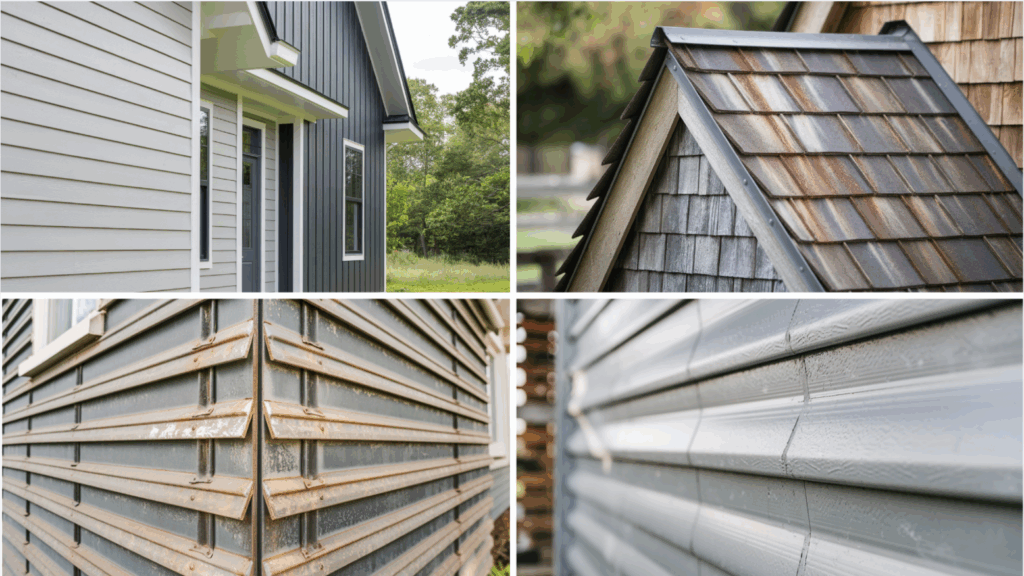
Once you’ve selected the material, it’s time to choose the style of the siding. The most common styles include horizontal, vertical, board-and-batten, shingle-style, and cedar-style metal siding.
1. Horizontal and Vertical Siding
Horizontal siding is a classic choice that offers a traditional, expansive appearance.
It’s commonly used in suburban homes and is well-known for its timeless appeal.
In contrast, vertical siding is often used in modern homes, as it adds height and a sleek profile, making it an ideal choice for narrower designs.
2. Board-and-Batten
Board and batten metal siding features wide panels with narrow strips of metal, giving it a bold and rustic look.
This style is often found in barn-style homes or those that want to evoke a more rugged feel.
3. Shingle-Style and Cedar-Style Metal Siding
Shingle-style metal siding mimics the appearance of wood shingles, providing a traditional aesthetic while maintaining the durability of metal.
This style works well for homes in historic neighborhoods or for those who prefer a more classic design.
Cedar-style metal siding combines the natural look of cedar with the strength of metal, offering a warm and welcoming appearance while minimizing maintenance.
4. Aluminum Siding
Aluminum siding, once a popular choice, has become less common for several reasons.
Over time, aluminum tends to fade when exposed to sunlight, which can make it appear worn even if it’s still structurally sound.
Additionally, aluminum is softer than other metals and can dent more easily.
While it’s still a cost-effective option, it doesn’t offer the same level of energy efficiency or insulation as more modern alternatives.
Advantages of Metal Siding
Metal siding brings numerous benefits that make it a reliable and efficient option for your home. These include:
- Durability: Resists rot, pests, and weather damage, offering long-lasting protection.
- Weather resistance: Stands up to various conditions without warping or cracking like wood.
- Low maintenance: Requires minimal upkeep, usually just an occasional rinse.
- Energy efficiency: Some metal siding options are insulated, helping regulate indoor temperature.
- Eco-friendly: Made from recycled materials and can be recycled again at the end of its lifespan.
Considerations for Installation
Ensure your walls are smooth before installing metal siding. DIY is possible, but hiring professionals is recommended to avoid leaks and damage. Costs vary by material.
| Consideration | Details | Best Approach |
|---|---|---|
| Wall Preparation | Ensure the surface is smooth and properly framed before installation. | Professional help is recommended for proper prep. |
| Insulated Panels | Extra planning is required for insulation. | Hire professionals for the correct installation. |
| DIY vs Professional | DIY is possible, but it requires specific tools and expertise. | Professionals are recommended to avoid mistakes. |
| Installation Costs | Costs vary depending on the material (e.g., Copper and Zinc are more expensive). | Invest in professional help to ensure longevity. |
| Long-Term Investment | Metal siding is durable and low-maintenance, making it a good investment. | Consider future savings in maintenance. |
Maintenance Tips for Metal Siding
Proper maintenance is key to ensuring your metal siding remains in great condition over time. To keep it looking its best, consider the following tips:
- Clean periodically: Use a mild detergent and water to remove dirt and grime from the siding.
- Check for rust: If you live in a coastal area, inspect the siding for rust and treat it promptly to prevent further damage.
- Inspect annually: Perform a yearly inspection, especially after storms, to ensure the siding remains intact.
Costs of Metal Siding
Material Costs:
- Steel & Aluminum: Affordable yet durable choices.
- Copper: A premium, higher-cost option for a sleek look.
Long-Term Savings:
- Metal siding requires minimal upkeep, saving on repairs down the line.
- Higher upfront costs are offset by long-lasting durability.
Labor Costs:
- Costs depend on project size, material choice, and installation complexity.
- Bigger homes and more intricate materials require more effort and expertise.
Hiring an Installer:
- Tip: Get multiple quotes and check references to ensure quality.
- Quality installation today means fewer headaches tomorrow.
Conclusion
By now, you should have a solid understanding of the various types of metal siding available and the factors to consider when selecting the right option for your home.
From weather resistance to energy efficiency and aesthetics, metal siding offers numerous benefits.
Consider your climate, home design, and maintenance preferences before making your decision.
If you’re uncertain, consulting a professional can help you make the best choice for your specific needs.

